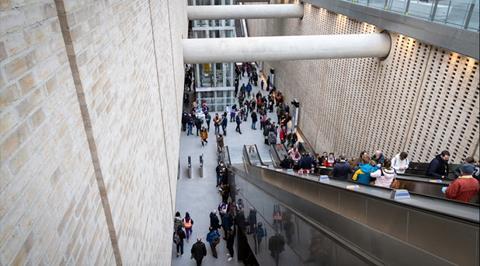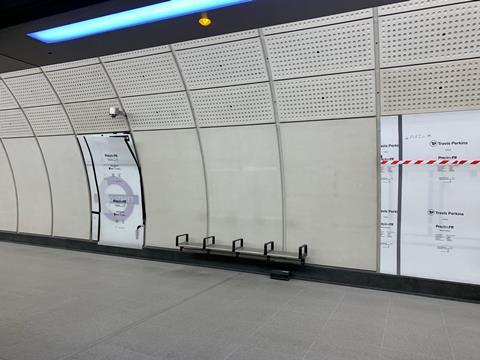Station did not open when rest of central section of railway got up and running in May
The only central London Crossrail station yet to open will do so in the next two months, Transport for London has said.
The £18.6bn project’s problem station at Bond Street is due to open by November, with TfL this morning confirming it will come in to service before the next stage of Elizabeth Line services start on 6 November.

The central section of the line, which opened three-and-a-half years late in May, currently runs services between Paddington in the west and Abbey Wood in the east. Travellers wishing to continue their journey toward Shenfield or Reading and Heathrow must currently switch at Liverpool Street and Paddington respectively.
But today’s announcement means that from the first week in November trains will run directly from Reading and Heathrow to Abbey Wood and from Shenfield to Paddington.
>> Crossrail: How the delay unfolded
>> The Elizabeth line: a welcome civic legacy designed to last 120 years
Commuters from Reading and Heathrow will be able to travel east all the way to Abbey Wood without changing at Paddington from 6 November.
Customers travelling from Shenfield will be able to travel west all the way to Paddington without changing at Liverpool Street.
TfL has also confirmed that the frequency of services in the central section between Paddington and Whitechapel will increase from 12 trains an hour to 22 trains an hour in peak times and 16 trains an hour during off-peak.
The final timetable, which will see 24 trains an hour during the peak, is on track to be in place by May next year.
What happened at Bond Street?

The troubled job, which was being delivered by a Costain-Skanska joint venture (CSJV), was already 18 months behind programme when the pandemic hit.
In 2019, then Crossrail chief executive Mark Wild said the delays went all the way back to 2014, adding: “The reasons for the Bond Street delay are quite interesting actually and they are mostly that the tunnelling was a year late at Bond Street, so Bond Street is a year behind every other station because of the tunnelling back in 2014.”
There had also been clashes between the JV and Crossrail’s management, with the latter’s frustration breaking out into the open in the summer of 2019.
Minutes from a Crossrail board meeting that June showed laid bare its exasperations.
Referring to the recent change of chief executive at Costain the month before, where the retiring Andrew Wyllie was replaced by Alex Vaughan, the papers added: “The board noted that further change in leadership within CSJV was necessary and expected.”
Before he left, Wyllie had told Building about Bond Street: “I don’t recognise [the] language about lateness.” He said: “Our contract isn’t late, there have been a number of changes in regard to the contract and we are completing the contract in line with the programme.”
While most of Crossrail’s jobs, stalled for 12 weeks by the pandemic in 2020, restarted, work at Bond Street remained mothballed.
According to a report by the Greater London Authority: “The state of Bond Street at that time meant that it was not possible to practise a safe stop of the construction works in response to the pandemic and then restart quickly.
“Crossrail needed to replan and re-sequence all of the work, and the contract that Crossrail had with CSJV was not appropriate.”
On 25 June 2020, Crossrail decided to terminate its contract with the JV, paying it £19m and completing the station on its own.
The GLA report recommended that TfL review its procurement of Bond Street to ensure lessons were learned for major projects but said the termination of the contract was a “success story” which ultimately saved the project millions.
According to the report, continuing with the existing contractual arrangement would have cost as much as £775m, compared with the current estimated cost of £680m.



























No comments yet